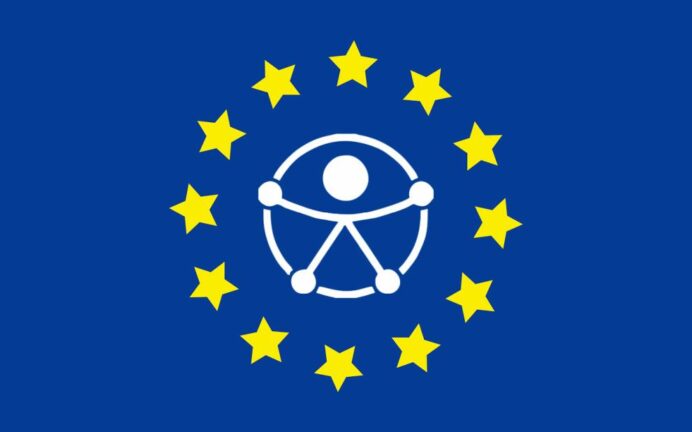Five years after its adoption, the EAA, European Accessibility Act, enters into force on June 28, marking a watershed moment in the EU’s push for a more inclusive single market. The new law aims to eliminate the patchwork of national accessibility rules that have long complicated cross-border trade and excluded millions of Europeans from full participation in digital and physical life.
Adopted in 2019 after years of negotiation, the EAA sets out common accessibility requirements for a broad range of everyday products and services, from ATMs and smartphones to banking apps, e-commerce platforms, and public transport information systems.
According to Eurostat, more than 101 million people in the EU, or one in four adults, live with some form of disability. For them, the EAA aims to deliver a future where accessibility isn’t a niche add-on, but the baseline.

What’s covered?
The EAA targets products and services deemed most critical to everyday life, and most likely to suffer from divergent standards across Member States. According to the European Commission, this includes:
- computers and operating systems,
- ATMs, ticketing and check-in machines,
- smartphones,
- TV equipment related to digital television services,
- telephony services and related equipment,
- access to audio-visual media services such as television broadcasts and related consumer equipment,
- services related to air, bus, rail and waterborne passenger transport,
- banking services,
- e-books,
- e-commerce.
All must meet functional accessibility requirements. While businesses are told what they must achieve, they are not told how to do it.
A unified framework
Until now, Member States have had their own, often inconsistent, national standards. As a result, businesses faced compliance headaches, while consumers with disabilities encountered confusion or, in the worst case, exclusion.
The EAA changes that by harmonising rules across all 27 Member States, creating a single regulatory framework that ensures accessible products and services can circulate freely across the EU. For companies, particularly SMEs, the Act means lower compliance costs, more predictability, and broader market reach, says the Commission.
You might be interested
What compliance looks like
The EAA requires services to make websites and mobile apps accessible, and to offer alternative ways to communicate, such as real-time text, sign language support, or accessible customer service interfaces.
For example, transport services must ensure that ticketing systems, travel information, and self-service machines are usable by people with disabilities. Streaming platforms must provide audio descriptions or subtitles with sufficient quality and user control. Banks will need to ensure that both information and authentication processes, such as electronic signatures and ID checks, are accessible.
On the product side, companies must design interfaces that support multiple sensory channels, such as visual alternatives to sound, or tactile cues alongside visual ones. Labels, instructions, and safety warnings must also be provided in formats people can perceive and understand.
What if they don’t comply?
Enforcement falls to individual Member States, but the penalties can be steep: fines, withdrawal of non-compliant products or services, and liability for company officers. The reputational risks may be even higher, as consumer groups and disability advocates grow more organised and litigious.
A Europe that works for everyone
With 27% of EU citizens over the age of 16 reporting some form of disability, the EAA promises greater availability of accessible products and services, making daily life easier and more inclusive. By removing barriers in transport, education, and the open labour market, the law also aims to open doors to broader social and economic participation.











